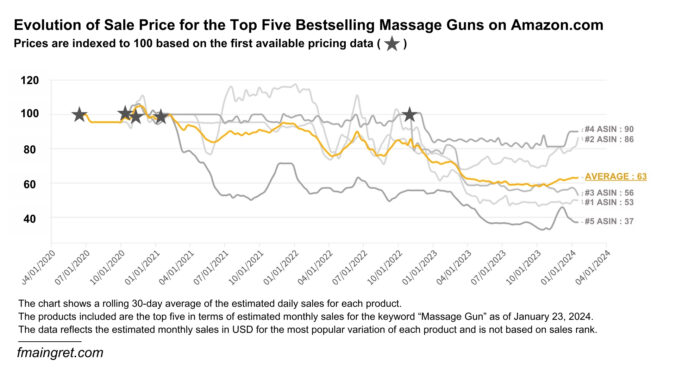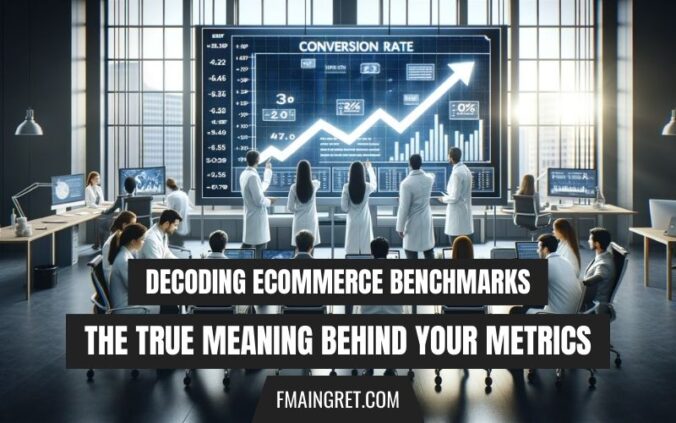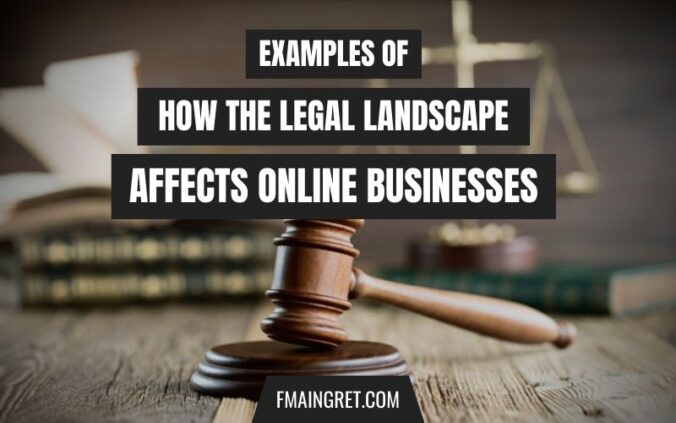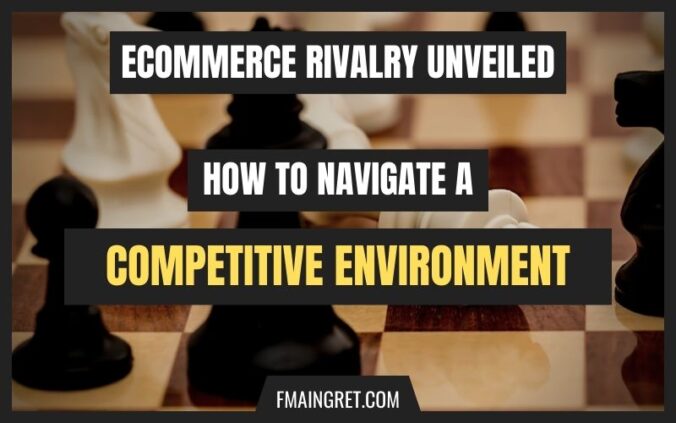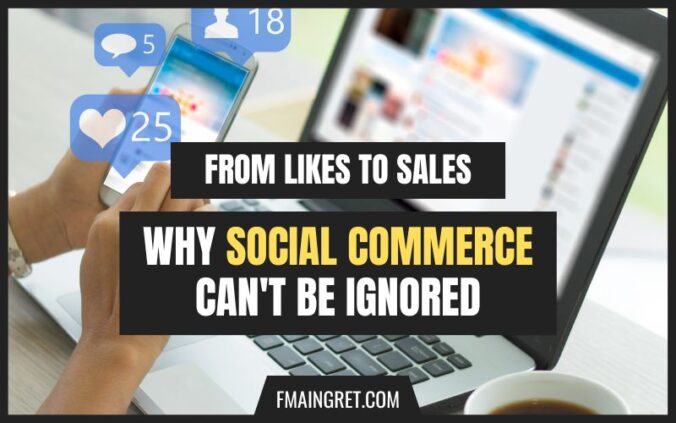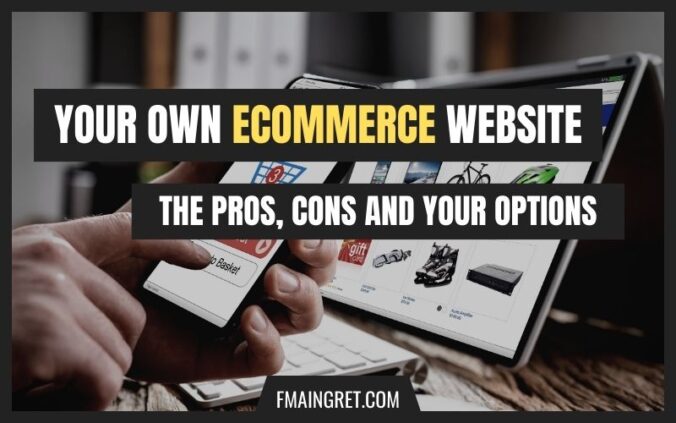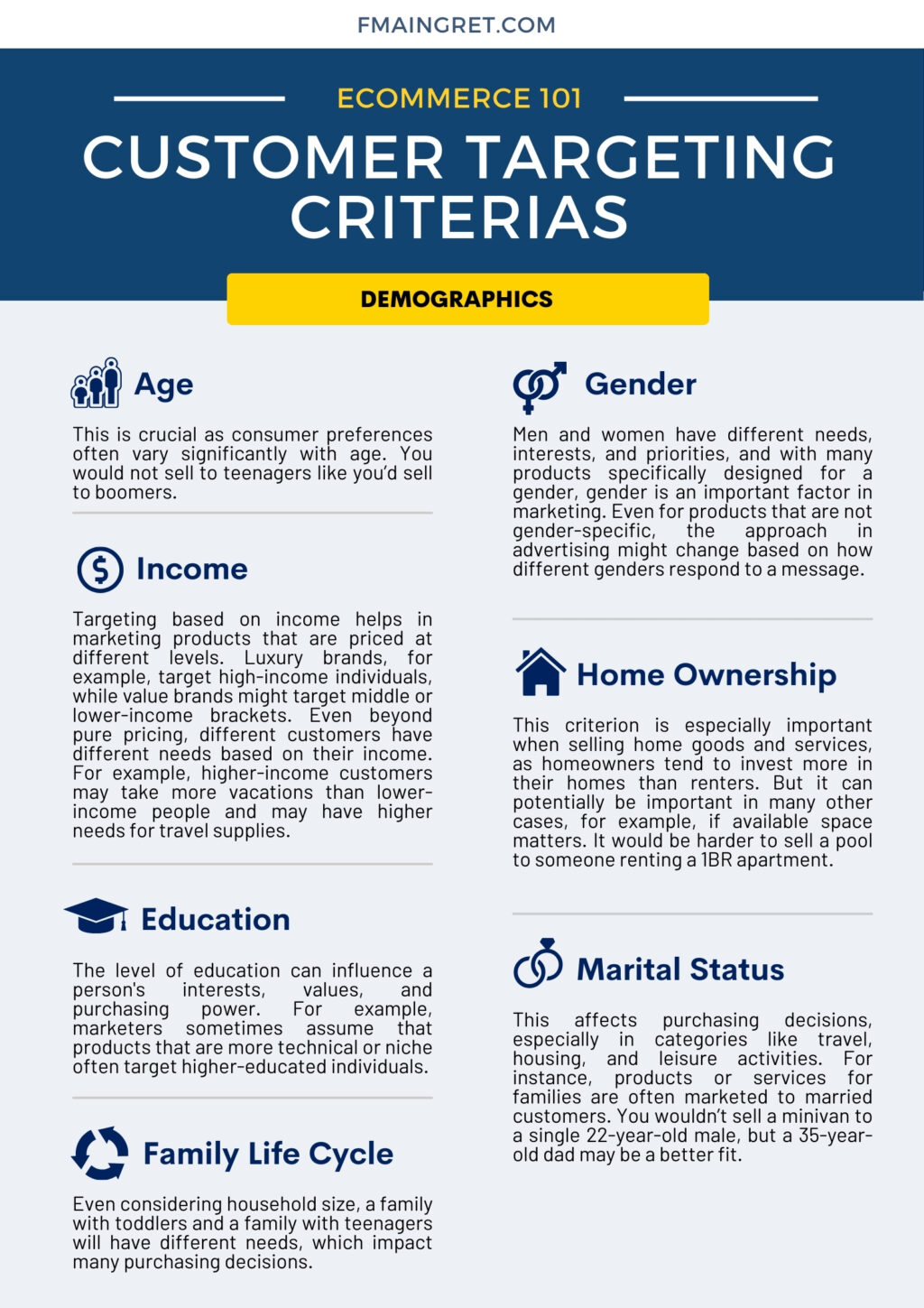
Page 4 of 8
I see the value proposition as the cornerstone of a successful business, something I often go back to when I discuss important business and e-commerce concepts. Another key part is marketing and how to communicate this value proposition to the world. However, I believe an often overlooked aspect is addressing the right target demographic.
Continue readingBelow is one of my recent LinkedIn Post. I wanted to also share it here on my blog, as I think the data I collected and charts I built can be insightful to those of you selling on Amazon.
Is Amazon saturated? I don’t have the answer, but I do have some interesting anecdotal data (and some good news if you’re in the market for a massage gun).
I looked at a random product, massage guns. First, the evolution of the sale price for the current top 5 massage guns on Amazon. Most launched in 2020 (the first few months of data isn’t always available).
In this super competitive world, everyone wants to see how they rank. Which football team is leading this season? What are the top 5 best-selling smartwatches? Which car has the best 0-60 times? In reality, the most important question is arguably, “Am I doing well compared to my competition?” That’s where benchmarks come in, and they’re everywhere – from tech, health, and of course the business world.
Continue readingRemember when the ecommerce world was the Wild West? Back in the early 2000s, when companies could collect any data they wanted, and there were little standards for online transaction security. Times have changed, but threats are still there, and we now see new regulations every day. Authorities and regulators must ensure that consumers are protected, and the business environment is fair for all its actors. You can hear about it in the daily news. The Federal Trade Commission is going after Amazon, the Indonesian government is taking action against social media, etc. The legal environment has a massive impact on competitive dynamics, and it is important that entrepreneurs understand the current regulations where they operate.
Continue readingWhen I started my first business, I dedicated several months to work on my D2C website. I was very proud of having my own website with my own products for sale. It was only when I thought my website was good enough that I created my Amazon Seller account. I was surprised to see that it barely took me two weeks to create my Amazon listings and secure my very first sale. If only I had created my Amazon before working on my website, I could have made six months’ worth of sales before opening my D2C channel. I didn’t have a good idea of what sales channel to prioritize at the time, and this was a costly mistake.
Continue readingIn the grand theater of ecommerce, competition takes center stage, keeping the audience on the edge of their seats. But not every performance is a heart-pounding Shakespearean tragedy. Each business has its unique script, stage, and actors, and the intensity of rivalry among competitors can vary dramatically.
Today, we will explore the competitive dynamics of the business world, with a special focus on the ecommerce world. For the business strategy nerds out there, we’ll delve into Porter’s analysis of the intensity of rivalry and apply it to online businesses. We’ll review the key factors that impact the intensity of rivalry before looking at strategies to successfully navigate a competitive environment. So, let’s dive in and discover what keeps our audience applauding.
Continue readingIn ancient times, shopping was an adventure: people had to leave their houses, get in their cars, and explore aisles of physical retail stores, searching for treasures and good deals. Then came ecommerce, which changed the world. People now had the option to shop from their couches and get products delivered directly to their door. As a result, and for a long time, there were two very different worlds that provided very different experiences: physical stores and online shopping. How cool would it be if customers could have a unified shopping experience, whether they shopped from their laptops at home, a smartphone app, or directly at a retail store? That is already the case, and it is called an omnichannel strategy.
Continue readingHave you ever been scrolling on your Instagram feed, seen a picture of a model wearing a pair of shoes you really like, and then found a View Products tag? That is social commerce: the fusion between ecommerce and social media. Kids are now born with a smartphone in their hands and social media on the screen. Platforms like Instagram, Facebook, and TikTok drive huge amounts of traffic daily and have billions of users worldwide. Companies had to find ways to monetize all this traffic and data, and social commerce is one of them. This relatively recent way of selling is significantly impacting the digital marketing world, and it is getting bigger by the year. But how big is it exactly and should you use it? Let’s find out.
Continue readingIn the age of Amazon.com, is it still relevant for brands to have their own ecommerce website? Many entrepreneurs use Amazon, or other marketplaces as their primary and only sale channel. Others focus mostly on their own website. And a lot of businesses go with a hybrid approach and sell on multiple sales channels. So what is the right approach? And is a website still necessary?
Continue reading
